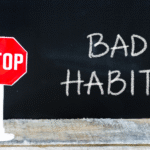Oral Health & Overall Wellness
Introduction: Your Mouth is More Than Just a Smile
Imagine this: You’re rushing through your morning routine, skipping flossing “just this once,” and swishing mouthwash to mask last night’s dessert. No big deal, right? Think again. That nagging gum bleed or persistent bad breath might be your body’s SOS signal. Emerging research reveals that oral health is a mirror reflecting your entire body’s wellness—from your heart to your brain. Ignore your gums, and you might be inviting far more than cavities. Let’s dive into the surprising connections between your mouth and your overall health—and how to protect both.

The Mouth-Body Connection: Science You Can’t Brush Off
Your mouth is a bustling ecosystem teeming with bacteria. While most are harmless, poor oral hygiene lets bad bacteria thrive, leading to gum disease (gingivitis or periodontitis). These troublemakers don’t stay put—they enter your bloodstream, triggering inflammation and contributing to chronic diseases.
Key Findings:
- Heart Disease: Gum disease increases heart attack and stroke risk by 20-50% (American Heart Association, 2022). Inflammation from oral bacteria can damage blood vessels.
- Diabetes: Uncontrolled blood sugar fuels gum infections, while gum disease makes diabetes harder to manage—a vicious cycle (Mayo Clinic, 2023).
- Pregnancy Complications: Periodontitis is linked to preterm birth and low birth weight due to inflammatory chemicals crossing the placenta.
- Respiratory Issues: Inhaling oral bacteria can worsen pneumonia and COPD (NIH, 2021).
- Mental Health: Tooth loss and chronic pain from dental issues heighten depression and anxiety risks.
5 Oral Health Red Flags That Impact Your Whole Body
1. Bleeding Gums: More Than Just a Nuisance
The link: Bleeding gums signal inflammation, which can spread systemically.
What to do:
- Upgrade your flossing game: Use a water flosser or soft picks if traditional flossing hurts.
- Try anti-inflammatory foods: Omega-3s (salmon, walnuts) and vitamin C (bell peppers, citrus) soothe gums.
- See your dentist: Persistent bleeding may indicate gingivitis or vitamin deficiencies.
2. Chronic Bad Breath (Halitosis): A Window to Gut Health
The link: Bad breath often stems from gum disease or gut imbalances like acid reflux.
What to do:
- Scrape your tongue: Bacteria on the tongue cause 80-90% of bad breath.
- Stay hydrated: Dry mouth breeds odor-causing bacteria.
- Probiotics: Strains like L. salivarius improve oral and gut microbiomes.
Video Credits
3. Tooth Grinding (Bruxism): Stress’s Silent Partner
The link: Grinding wears down enamel, causes jaw pain, and is tied to sleep apnea and anxiety.
What to do:
- Night guards: Custom-fit guards protect teeth and reduce muscle strain.
- Mind-body practices: Yoga or meditation lowers stress-induced grinding.
- Check your sleep: A sleep study can rule out apnea-related bruxism.
4. Dry Mouth: More Than Just Thirst
The link: Saliva neutralizes acids and fights germs. Chronic dry mouth (xerostomia) raises cavity risk and is linked to autoimmune diseases like Sjögren’s.
What to do:
- Sugar-free gum: Stimulates saliva with xylitol to curb bacteria.
- Humidify your space: Bedroom humidifiers combat nighttime dryness.
- Review medications: 500+ drugs list dry mouth as a side effect—ask your doctor.
5. Oral Sores or White Patches: Don’t Ignore the Signals
The link: Persistent sores can indicate vitamin deficiencies (e.g., B12), oral cancer, or autoimmune conditions.
What to do:
- Track duration: Sores healing within 2 weeks are usually harmless.
- Avoid irritants: Ditch spicy foods and alcohol-based mouthwash temporarily.
- Get screened: Regular oral cancer checks are lifesavers.
Daily Habits to Protect Your Mouth (and Body)
- Brush smarter: Use a soft-bristled brush at a 45-degree angle for 2 minutes, twice daily.
- Floss like it’s a prescription: It removes 40% of plaque your brush misses.
- Choose fluoride: Strengthens enamel and reverses early decay.
- Swap sugary snacks: Crunchy veggies (carrots, celery) scrub teeth naturally.
- Quit smoking: Tobacco doubles gum disease risk and slows healing.
Myth-Busting: Common Oral Health Misconceptions
- Myth: “No pain, no problem.”
Truth: Gum disease is often painless until advanced. Regular checkups are key. - Myth: “Whitening = Healthier.”
Truth: White teeth can still harbor gum disease. Focus on gum health first. - Myth: “Kids’ baby teeth don’t matter.”
Truth: Decay in baby teeth harms adult teeth development.
When to See a Professional
- Dentist: Every 6 months for cleanings, or sooner if you notice swelling, pain, or sores.
- Doctor: If oral issues coincide with fatigue, joint pain, or unexplained weight changes.
Conclusion: Your Mouth is a Health Powerhouse—Treat It Like One
Oral health isn’t just about avoiding cavities—it’s a cornerstone of whole-body wellness. By brushing up on your habits and listening to your mouth’s subtle warnings, you’re safeguarding your heart, brain, and longevity.
Your Next Step: Book that dental checkup you’ve been postponing, and share this article with someone who needs a nudge. For more tips on holistic health, [subscribe to our newsletter] and turn small changes into lifelong gains.











